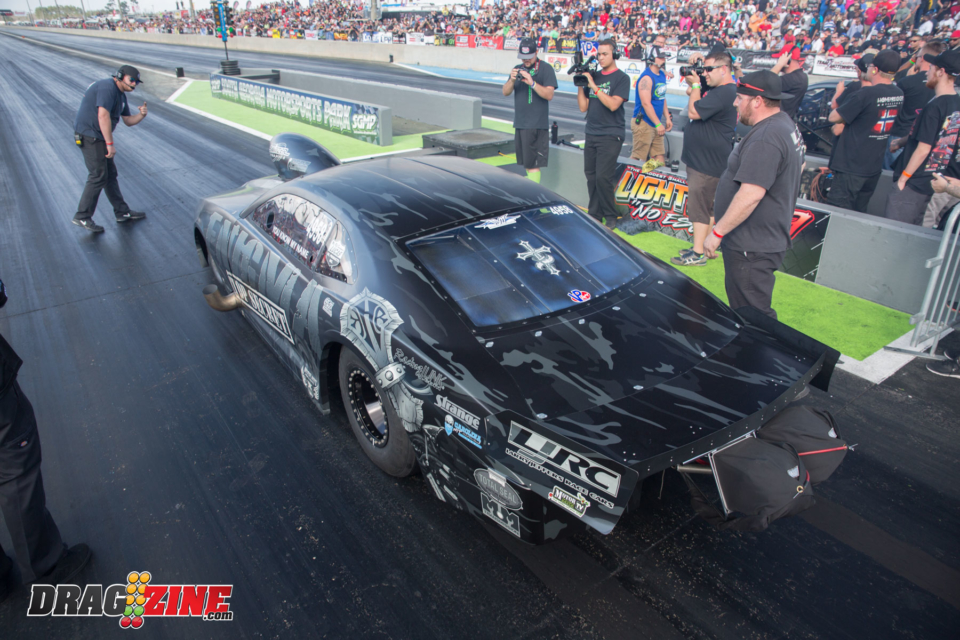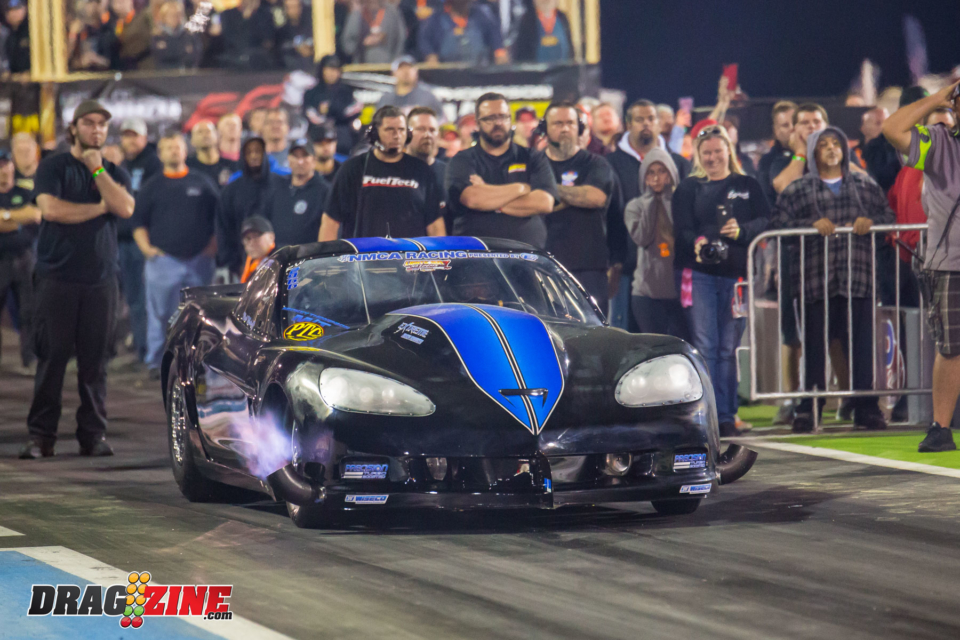If you’ve read my columns in the past, you know I’m a numbers guy — I enjoy seeing record-setting elapsed times and speeds, the effort that goes into the pursuit of such standards, and the energy in the air that comes with it as much as anyone. Argue it if you will, but breaking records is a significant driver of fan appeal and racer-motivation, and always has been. At the same time, however, there are drag races to be won.
And consistency wins more drag races than outright muscle.
Drag radial racing has to this point largely defied the law of marginal gains that longer-tenured eliminators have long lived by. That’s because, for at least the last three to four years — if not longer — the cars have had all the capability in the world of running in the low 3.70s. It’s simply been a matter of the teams figuring out how to utilize their horsepower in unison with track prep specialists learning to improve the track surface little by little to accommodate it. That’s why racers could shatter records even on hot mid-summer afternoons or in near-freezing conditions — because they were nowhere near their potential. Consequently, fans have come to expect mind-blowing numbers, and race teams likewise expect perfection in a racetrack conducive to ‘moonshot’ runs.
But now that Radial vs The World cars have closed in on their potential, that mindset is forced to change.
Dating back to the inaugural Lights Out race nine years ago, qualifying has always been more heavily anticipated than the racing itself. Who won the race seemed of less value than who went to number one and what their elapsed time was … or what barrier they broke in the process. But what we witnessed last week at Lights Out 9 was a prime example of the shift in this approach — the track surface and the atmospheric conditions simply weren’t there to produce the 3.6-second pass everyone came in expecting, nor even an elapsed time as quick as was recorded at this race one year ago. Some were quick to criticize the South Georgia Motorsports Park crew for the preparation of the track, but it’s simply misguided to expect perfection at all times, and even if that can be achieved, you’re still at the mercy of the air these engines consume.
But that didn’t stop the teams, again, expecting perfection, from trying in what early on was a go-big or go-home (literally) effort. The result was an opening qualifying session where only three teams made presentable runs and the bump spot was a pedestrian 7.75-seconds. Several good racers struggled all through qualifying. Drivers were routinely toasting converters as their opponents attempted to feather the stage bulb to go to number one. Others timed themselves out and lost their runs entirely. It should be noted that number one pays precisely as much as thirty-two.
Now the genre is challenged with producing good, quality racing without the expectation of anything otherworldly going down.
Meanwhile, Keith Haney and crew chiefs Brandon Switzer and Brandon Pesz tuned their nitrous-assisted Camaro to the conditions they were given from the outset, producing quality runs throughout the week that resulted in a well-deserved final round appearance in Radial vs The World. They weren’t the quickest on the property, but while their peers were spinning at sixty-feet and bowing out of eliminations, they were going rounds. In the end, the only driver that beat Haney was the one team that produced likewise consistent, repeatable (but slightly quicker) numbers during the week. That racer, Steve Jackson, knew a 3.69 or a 3.72 weren’t out there, and he and tuner Phil Shuler didn’t try … the $50,000 was the carrot they wanted. And he and Haney spent all week preparing their cars specifically to get it.
In a lot of ways, this is a new frontier for drag radial racing, which has been in a run-away state of performance advancement ever since the early NMRA radial-class days, the likes of which we haven’t seen in drag racing in decades. But sooner or later, it had to reach a proverbial wall, and it has. Now the genre is challenged with producing good, quality racing without the expectation of anything otherworldly going down. Will the teams who are focused more on numbers than the racing itself continue to pour money into it? And will the genre still command the same level of fan appeal, even if 3.80s and 3.90s are all they can reasonably expect? That all remains to be seen.




















